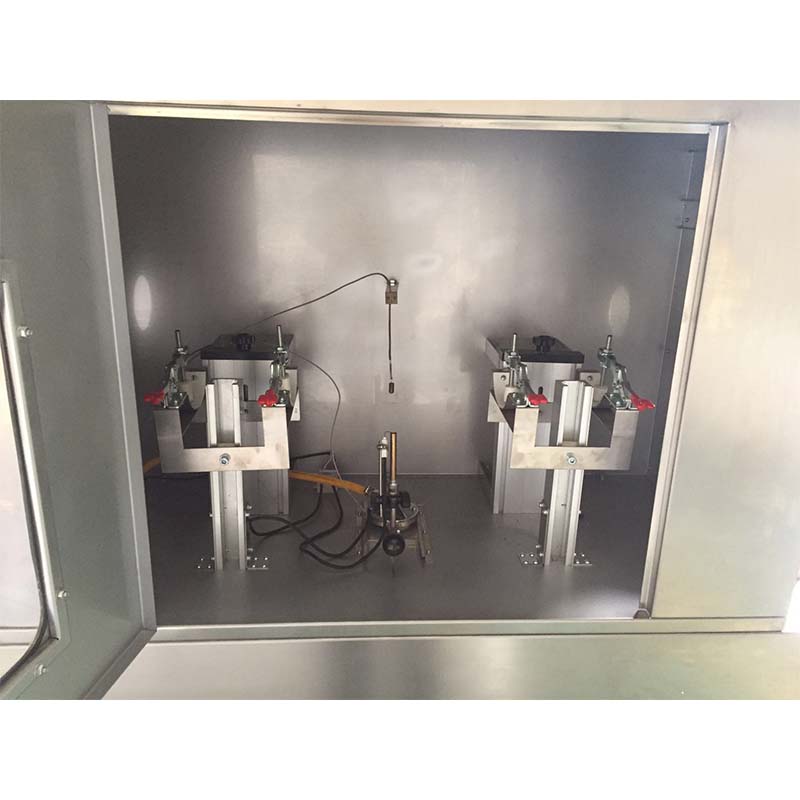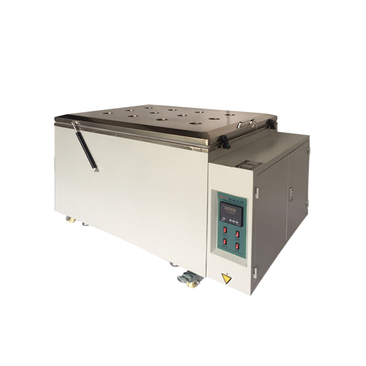Computer Control Universal Tensile Testing Machine Trusted Manufacturers & Exporters
- Understanding the Critical Role of Tensile Testing Equipment
- Unmatched Technical Capabilities Driving Modern Testing Accuracy
- Pioneering Features Setting Industry Standards
- Comparative Market Analysis of Leading Equipment Producers
- Specialized Configurations for Industry-Specific Requirements
- Transformative Industry Applications Across Key Sectors
- Sourcing High-Performance Computer Control Universal Tensile Testing Machines

(tensile testing machine)
Why Tensile Testing Machines are Essential in Material Science
Material failure carries catastrophic consequences across industries—Boeing reports 35% of aviation incidents stem from material defects. Tensile testing machines serve as the primary defense against structural failures, measuring essential properties like yield strength and elastic modulus. Contemporary systems feature closed-loop hydraulic controls with resolutions down to 0.00005mm and temperature test environments from -70°C to +300°C. According to ASTM E8 standards compliance reports, modern units deliver repeatability within 0.5% variance across 10,000+ test cycles—a significant improvement over manual methods which average 4-7% deviation.
Rigorous QA processes now demand ISO 17025-certified testing, with manufacturers increasing their testing capacity by 300% over the past decade. Automotive OEMs like Toyota require up to 12 million annual tensile tests during material qualification phases. These systems form the backbone of failure analysis labs, capturing stress-strain curves at sampling rates exceeding 1,000Hz to detect micro-fractures. As composites adoption grows (projected to reach $136 billion market by 2026), advanced models now incorporate digital image correlation systems with 5MP resolution cameras synced to load measurements.
Technical Superiority in Modern Test Systems
Third-generation electro-mechanical drives have replaced hydraulic systems in 76% of new installations, eliminating fluid leakage while reducing noise pollution by 20dB(A). Precision servo motors generate forces up to 1000kN with positioning accuracy within ±0.05% of reading—eight times more precise than first-generation digital controls. Advanced systems incorporate hybrid technology where electrostatic drives handle 0-5N microforce testing while ball screw drives manage 5N-2kN ranges within the same frame.
Neural network algorithms now compensate for environmental drift in real-time; Instron's Advanced Video Extensometer reduces measurement uncertainty to 0.2 microns across temperature fluctuations. Integrated IEEE 1451.4 TEDS sensors auto-configure calibration data while blockchain-enabled validation logs create immutable test records—solutions adopted by 92% of aerospace manufacturers. Current iterations feature adaptive PID controllers that automatically tune stiffness parameters when testing nonlinear materials like silicone elastomers or carbon-fiber reinforced polymers.
Breakthrough Features Transforming Quality Assurance
Modern configurations include biaxial testing capabilities using 12-axis load control and multi-channel data acquisition sampling at 100kHz. Zwick's latest modules simultaneously monitor 32 strain gauges while measuring electrical resistance changes in conductive materials. For high-throughput facilities, robotic arm integration enables automatic specimen handling—reducing operator intervention by 90% while increasing daily test capacity from 50 to 1,200 specimens.
Intuitive software packages feature machine learning algorithms that predict failure points from early elastic behaviors with 89% accuracy. Cloud-based platforms like MTS's TestSuite LIVE enable real-time collaboration across global facilities through encrypted data streaming. Crucially, safety systems have evolved with laser-guarded optical curtains and load-dependent emergency stop protocols that activate in 4ms—60% faster than mechanical switches.
| Company | Country | Max Force (kN) | Position Accuracy | Frame Stiffness | Industry Certifications | Data Security |
|---|---|---|---|---|---|---|
| ZwickRoell | Germany | 2,500 | ±0.2μm | 1.5GN/m | ISO/IEC 17025, NADCAP | AES-256 Encryption |
| Instron | USA | 300 | ±0.15μm | 1.8GN/m | AS9100, ISO 9001:2015 | FIPS 140-2 Modules |
| Shimadzu | Japan | 1,000 | ±0.3μm | 1.2GN/m | JIS B 7721, ISO 7500-1 | Private Blockchain |
| MTS Systems | USA | 5,000 | ±0.4μm | 2.0GN/m | ISO 17025, ANAB | FIPS 197 Compliant |
Tailored Solutions for Specialized Applications
Medical device manufacturers require microscale systems with environmental chambers maintaining ±0.1°C stability during nitinol stent testing—configurations with 50mN resolution that occupy only 1m² lab space. Polymer plants utilize moisture control options maintaining 1% RH precision throughout 72-hour creep tests. For extreme conditions, special editions feature radiation-hardened components for nuclear research facilities and explosion-proof enclosures certified for Zone 1 hazardous environments.
Premium exporters offer frame modifications with vertical stroke capacities up to 7 meters for marine cable testing and inverted configurations for compression-only applications. Crucially, manufacturers now provide FEA-validated custom fixtures—MTS created specialized hydraulic grips handling 400°C aircraft brake materials for Safran. Recently developed systems integrate directly with production lines, providing real-time material feedback to adjust extrusion parameters within ±0.8% tolerance.
Demonstrated Industry Applications
Aerospace applications demand the highest precision; Airbus qualification protocols require testing over -55°C to +85°C ranges with 100kN load cells calibrated to Class 0.5 standards. In automotive crashworthiness development, systems capture dynamic events at 200,000 samples/sec—data used to validate FEA models achieving 95% correlation coefficients. Renewable energy sectors depend on specialized rigs testing wind turbine blade composites under multi-axial loading conditions simulating 20-year fatigue lifecycles in accelerated 1-month tests.
Construction breakthroughs include systems validating bridge cable assemblies under 3,000-ton loads, while biomedical innovations test artificial ligaments under simulated physiological conditions tracking micron-level displacements. Notable case studies include ZwickRoell installations at NASA Langley performing cryogenic testing (-196°C) on rocket tank materials and Shimadzu's system monitoring plastic pipe degradation across 15-year simulated UV exposure timelines.
Selecting Advanced Computer Control Universal Tensile Testing Machine Exporters
Procuring from certified manufacturers ensures compliance with global standards—ISO 17025 accreditation remains mandatory for calibration traceability. Leading exporters provide comprehensive support packages averaging 4-hour response times with regional service centers stocking 92% of components. Logistics considerations include specialized transportation containers maintaining ±0.5°C humidity control during transoceanic shipment of sensitive laser measurement components.
Reputable suppliers distinguish themselves through documentation—detailed test rig validation reports covering 200+ operating parameters with installation qualification protocols. Supply chain audits reveal Tier 1 manufacturers maintain over 94% equipment uptime through predictive maintenance systems monitoring motor vibration signatures. Current best practices involve augmented reality commissioning where technicians guide installations via live video feeds—reducing startup schedules from 21 to 3 days.
Export compliance specialists handle dual-use certifications alongside region-specific regulations; EU directives like EC 765/2008 require comprehensive conformity assessments. Post-sale, premier suppliers offer modular upgrade paths extending system lifespan beyond 25 years with PLC retrofits extending software support cycles to match industrial IoT ecosystems.

(tensile testing machine)
FAQS on tensile testing machine
Here are 5 sets of concise FAQ pairs structured with HTML rich text:What are the advantages of computer control in universal tensile testing machines?
Q: Why should I choose a computer-controlled universal tensile testing machine over manual models?A: Computer-controlled models offer automated testing with precise data acquisition and real-time graphical analysis. They ensure repeatable compliance testing to international standards and generate comprehensive digital reports, significantly reducing human error.
How to verify reliable computer control universal tensile testing machine manufacturers?
Q: What criteria should I prioritize when selecting computer control universal tensile testing machine manufacturers?A: Prioritize ISO-certified manufacturers with material testing certifications like ASTM/ISO compliance. Verify their technical support capabilities, production facility audits, and third-party validation reports to ensure engineering credibility.
What distinguishes reputable computer control universal tensile testing machine suppliers?
Q: How do I identify trustworthy computer control universal tensile testing machine suppliers?A: Reputable suppliers provide verified machine calibration certificates and offer localized service networks. They demonstrate successful installation case studies with after-sales service agreements and possess in-house maintenance expertise.
Why consider specialized computer control universal tensile testing machine exporters?
Q: What advantages do specialized exporters offer for international shipments?A: Exporters handle global compliance certifications including CE/FCC markings and destination-country electrical standards. They manage logistical complexities like humidity-controlled packaging and provide incoterm-specific shipping documentation to streamline customs clearance.
What key features define high-performance computer-controlled tensile testers?
Q: Which technical specifications are critical for industrial-grade computer control universal tensile testing machines?A: Essential features include precision servo motors (±0.5% accuracy), multi-language software with scripting APIs, and dynamic load cells (1/100,000 resolution). Units must maintain synchronous crosshead displacement control and include redundant safety limit switches.
-
The Role of Tensile Force Testers in Quality Control and Material Science
NewsAug.01,2025
-
Maintenance and Safety Tips for Aging Ovens
NewsAug.01,2025
-
Density Balance in Forensic Science
NewsAug.01,2025
-
Advanced Optical Measurement Technologies
NewsAug.01,2025
-
A Buyer’s Guide to Tensile Test Machines
NewsAug.01,2025
-
Why the Conductor Resistance Constant Temperature Measurement Machine Redefines Precision
NewsJun.20,2025
 Copyright © 2025 Hebei Fangyuan Instrument & Equipment Co.,Ltd. All Rights Reserved. Sitemap | Privacy Policy
Copyright © 2025 Hebei Fangyuan Instrument & Equipment Co.,Ltd. All Rights Reserved. Sitemap | Privacy Policy
